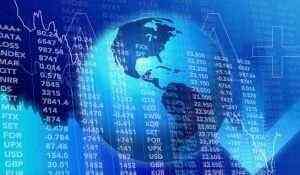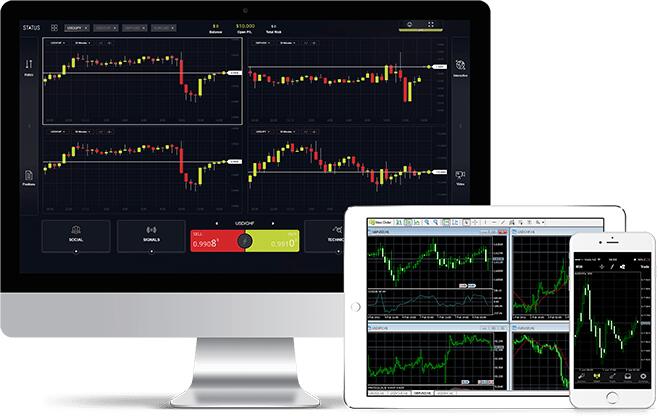
The ordering cost calculation starts with determining the number of orders that can occur in the period. And the number of orders can be calculated by dividing the annual quantity demanded(D) by the volume per order(Q). POS systems, such as QuickBooks Desktop piece rates and commission payments Point of Sale, can use reorder points to automate purchase order forms for you, which makes it simple for you to use the EOQ. Some systems, such as Lightspeed Retail’s POS system, will even let you set your desired inventory levels ahead of time.
Five fundamentals for creating an effective OKR process – TechCrunch
Five fundamentals for creating an effective OKR process.
Posted: Wed, 07 Jun 2023 07:00:00 GMT [source]
This allows the company to make strides towards being as cost-efficient as possible while ensuring that production and sales continuity is guaranteed. Without it, companies will tend to hold too much inventory during periods of low demand, while also holding too little inventory in periods of high demand. Economic order quantity (EOQ) is the ideal quantity of units a company should purchase to meet demand while minimizing inventory costs such as holding costs, shortage costs, and order costs. This production-scheduling model was developed in 1913 by Ford W. Harris and has been refined over time. The economic order quantity formula assumes that demand, ordering, and holding costs all remain constant.
Extensions of the EOQ model
The EOQ formula assumes that consumer demand is constant. The calculation also assumes that both ordering and holding costs remain constant. The EOQ formula calculates the ideal quantity of inventory to order from your manufacturer to avoid stockouts and overstocks, while also minimizing storage and setup costs. Many companies use the EOQ model to manage inventory more efficiently while simultaneously minimizing inventory costs. To calculate EOQ you’ll need to know your setup costs, demand rate, and holding costs (sometimes referred to as carrying costs).
Along with ordering the right amount of inventory, it’s also essential to collect the quantity of stock that best fits the economic and financial needs of the organization. The formula does not account for things like seasonality trends, bulk order discounts or the supply chain disruptions that we are facing during the pandemic. But you can always make tweaks to the inputs based on your own situation.
Calculations
The renewal of the inventory becomes faster, efficient, and accurate. Economic Order Quantity reduces the high cost of inventory storage. The amount of money spent on inventory storage becomes lesser and more affordable. When a business orders less inventory than its customers demand, it can easily lose out on customers who will go elsewhere for the product. This illustrates that the economic order quantity is always in the best interests of the firm.
Therefore, the metric is heavily dependent upon the quality of furnished data. By perfecting the flow of costs to the right areas, the funds can be allocated to the prioritized areas. With this metric and indicator at its disposal, an organization can reap benefits from what the calculations and interpretations suggest.
Cost Reduction
Especially when storing inventory in your warehouse, which is an expensive operation, EOQ is a must. The optimal order quantity is necessary to meet the customer’s needs and demands. Therefore, the primary benefit of using this model is that it considers every possible factor. It provides a detailed view of all the costs related to an order. Thus, providing the business owners a perspective on the ideal levels of hierarchy. Along with the unsold inventory, there are multiple tied costs such as acquisition costs, storage costs, warehouse expenses, and cost of unsold inventory.
EOQ, an acronym for Economic Order Quantity, is the ideal amount of order your organization should buy. It limits the inventory costs such as holding, shortage costs, and order costs. It helps companies maintain a consistent inventory level and is considered one of the most efficient techniques in inventory management.
Economic Order Quantity (EOQ) Formula
The Economic Order Quantity helps in estimating that level of inventory. Holding costs or carrying costs are all costs incurred for keeping one blanket on a shelf in the warehouse for a full year. Holding costs include warehousing and logistics costs, insurance, opportunity costs, and depreciation costs.
- Economic Order Quantity (EOQ) is derived from a formula that consists of annual demand, holding cost, and order cost.
- Holding cost is the total costs a company incurs to hold inventory in a warehouse or store.
- Ordering in less quantity might be more financially savvy for your business, or it can play a reverse card on you.
We are specialists in pallet racking, picking shelves, automated warehouses and logistics software. Therefore, this method is only advisable for certain organisations in which demand and cost remain relatively stable over the course of the year. If, for example, the cost of the raw material varies according to seasonality, the EOQ formula would https://online-accounting.net/ be ineffective, as it doesn’t consider that variable. Harold Averkamp (CPA, MBA) has worked as a university accounting instructor, accountant, and consultant for more than 25 years. He is the sole author of all the materials on AccountingCoach.com. We hope these compelling benefits have convinced you to start calculating EOQs in your company.
Constant Delivery Time
Now that you have understood how to calculate EOQ, you definitely want to know the few benefits of calculating EOQ for your business. Another point to remember is that the purchase cost of the goods is different from the cost of goods sold. A million-dollar question, literally and figuratively in every business, big or small, is “How much to order? Get instant access to lessons taught by experienced private equity pros and bulge bracket investment bankers including financial statement modeling, DCF, M&A, LBO, Comps and Excel Modeling.

They include Zoho Inventory EOQ Calculator, QuickBooks EOQ Calculator, and Omni Calculator.Omni Calculator is the best EOQ formula calculator. The EOQ formula calculator allows you to input your yearly demand, order cost, and yearly cost of holding which it uses to determine your Economic Order Quantity (EOQ). In situations where the EOQ is not a whole number, it predicts the number of units you should order to minimize your holding and order costs. Economic Order Quantity (EOQ) is the order size that minimizes the sum of ordering and holding costs related to raw materials or merchandise inventories. Keeping costs low will inflate margins and ultimately drive more revenue for the company. Ordering the optimal number of products needed helps the company to keep its costs low and prevent dead stocks.
The efficient Economic Order Quantity (EOQ) models require detailed data to calculate several figures. To minimize holding and order costs, YTech should order 7 units. To minimize holding and order costs, DeMoon should order 49 units. To find out the annual demand, you multiply the number of products it sells per month by 12. The Economic Order Quantity is used by manufacturing and merchandise companies. Perera et al. (2017)[4] establish this optimality and fully characterize the (s,S) optimality within the EOQ setting under general cost structures.
